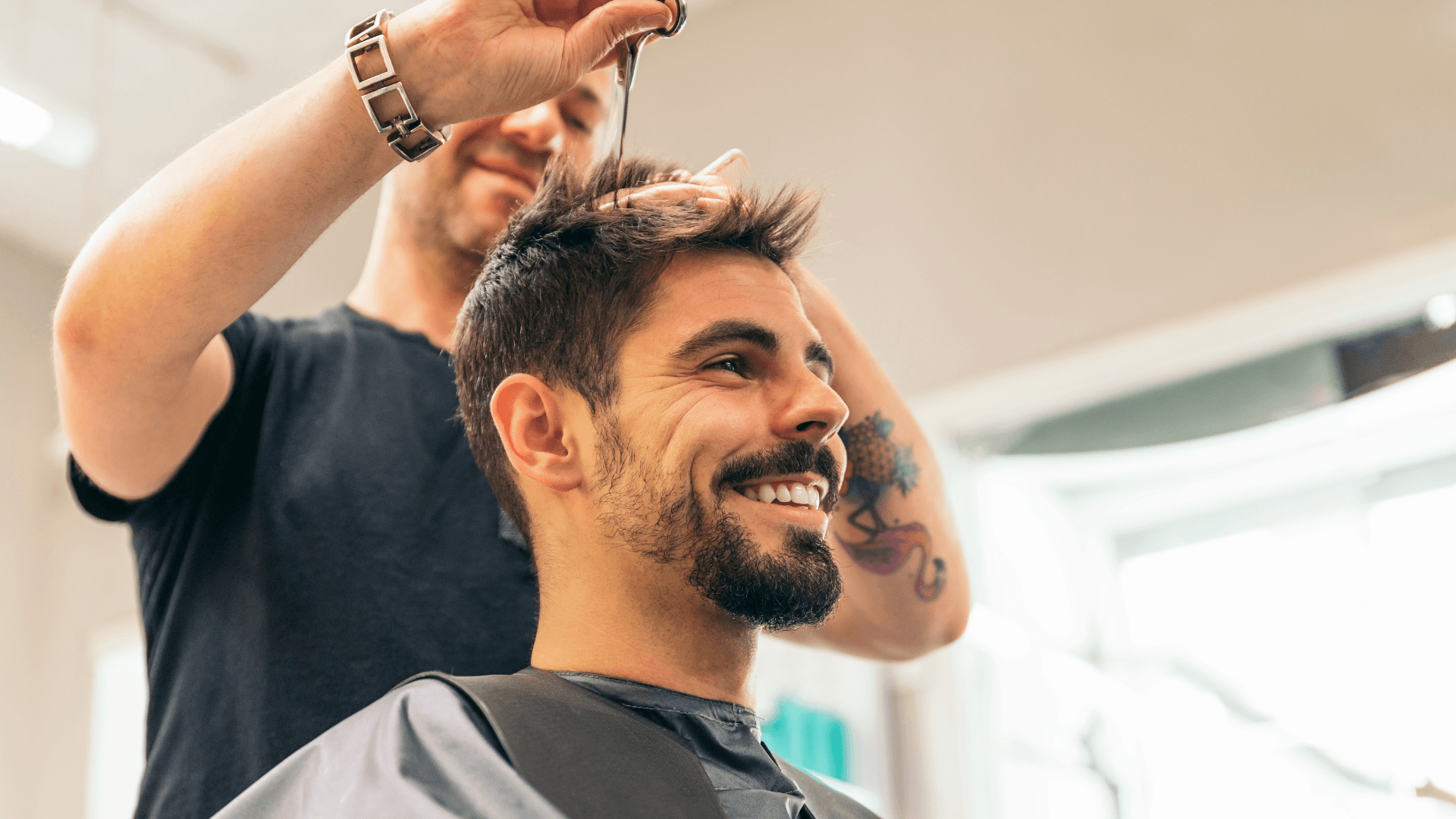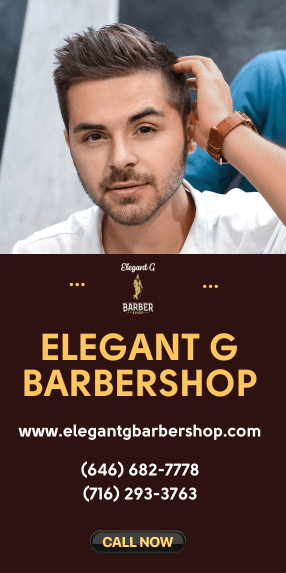Choosing the right haircut can seem like a daunting task, especially with the endless styles and trends to consider. The key lies in understanding your face shape, hair texture, and personal style. A well-chosen haircut not only complements your features but also boosts your confidence and overall appearance. By focusing on these factors, this quick guide will help you determine the best haircut for you in no time.
Step 1: Know Your Face Shape
Understanding your face shape is the foundational step in choosing the perfect haircut. Your face shape influences how certain styles complement your natural features and bring out your best look. Different face shapes suit different haircuts, and recognizing your unique structure ensures you’ll pick a style that enhances your overall appearance. Here’s a closer look at the most common face shapes and the styles that suit them:
Oval Face Shape
An oval face shape is often considered the most versatile because of its balanced proportions. If your face is slightly longer than it is wide, with no prominent jawline or forehead, you likely have an oval shape. The good news is that most hairstyles work for this shape. Whether you opt for a short crop, long layers, or even bold, asymmetrical cuts, an oval shape can carry virtually any style with ease. However, it’s best to avoid hairstyles that fall over your face and disrupt its natural symmetry. Instead, focus on styles that frame your face or add texture, drawing attention to your features.
Round Face Shape
If your face has a rounded appearance with full cheeks, a soft jawline, and similar width and height measurements, it’s categorized as round. The key here is to add definition and create angles with your haircut. Angular cuts, such as an undercut or styles with longer layers on top and shorter sides, can elongate your face and enhance its structure. Side parts, asymmetrical bob haircuts, or soft fringes that sweep to the side are also excellent options because they break the roundness and create a more defined look. Be cautious with overly round or curly styles as they may emphasize the fullness of your face.
Square Face Shape
Square faces are marked by a strong jawline, broad forehead, and proportional width and height. This shape typically exudes strength and boldness, so choosing the right haircut involves balancing those sharp features. Styles with soft layers, textured edges, or waves are ideal as they soften angular lines. Opt for haircuts where the focus is on volume toward the top of the head, like a layered pompadour or a wavy lob, as these can round out the face slightly. Avoid blunt cuts and heavy straight bangs, which can accentuate the squareness of your features.
Heart Face Shape
A heart-shaped face is characterized by a wider forehead that tapers down to a pointed or narrower chin. With this shape, the goal is to draw attention downward and balance the face. Side-swept bangs, chin-length cuts, or bobs are perfect because they add width to the narrow part of the face. Long layers starting below the chin can also help to frame the face beautifully. For those with longer hair, soft waves cascading down create harmony between the broader forehead and smaller chin. Avoid top-heavy hairstyles, like tight ponytails or extremely short crops, which might exaggerate the width of the forehead.
Unsure of Your Face Shape?
If you aren’t certain of your face shape, don’t worry—it’s a common challenge. One of the simplest ways to determine it is by pulling your hair back and observing the natural outline of your face in the mirror. Pay attention to the width of your forehead, cheeks, and jawline, as well as the overall length of your face. If you’re still unsure, a professional stylist or New York barber can offer valuable insights by analyzing proportions and helping you identify your shape. They can also recommend hairstyles tailored to your features, ensuring you walk out of the chair with a confident new look.
Taking the time to identify your face shape will guide you in the right direction for a haircut that truly flatters you. With this first step, you’re well on your way to choosing a style that enhances your unique beauty.
Step 2: Consider Hair Texture & Thickness
Hair texture and thickness are fundamental elements to take into account when selecting the perfect hairstyle. Both factors heavily influence how a cut will look, feel, and behave. By understanding your hair’s natural properties, you can choose styles that accentuate its strengths and work with its challenges, rather than against them. Here’s a detailed breakdown of how to approach different hair types and what to consider:
Thick Hair
If you have thick hair, you may find it tends to feel heavy, and at times, it can be difficult to manage or style. Layers can be an excellent solution for thick hair, as they help reduce bulk and add shape. Graduated layers or feathered edges can help create a sense of movement and lighten the weight without sacrificing volume. When paired with the correct styling techniques, layered cuts can prevent thick hair from overwhelming your facial features or appearing too dense. Additionally, opting for thinning techniques, which involve specialized shears or razors, can create a more balanced and refined look. A professional barber or stylist, especially at a reputable New York barbershop, can expertly craft a layered cut that complements your face shape while controlling the natural volume of your hair.
Thin Hair
For those with thin or fine hair, volume is often a primary concern. Haircuts that create the illusion of thickness are highly recommended. Blunt cuts, for example, can add a sense of density by maintaining an even length across the ends, which helps hair appear fuller. Shorter styles, such as bobs or pixie cuts, are also excellent choices as they tend to naturally give the appearance of more body. Incorporating subtle texture into shorter lengths can provide movement without compromising fullness. For medium to longer styles, consider adding soft layers at the top or crown to maximize lift and shape. Professionals at a New York barbershop can use techniques like precise layering and blow-drying to ensure thin hair looks voluminous and vibrant. They can also guide you on the best products, such as volumizing sprays or mousse, to enhance your haircut between visits.
Curly Hair
Curly hair, with its natural bounce and texture, requires specific care to ensure the right balance between length and shape. Longer lengths generally work best for curly hair as they add weight, which helps prevent excess puffiness that can occur with shorter cuts. Long layers can enhance the natural curl pattern, reducing frizz and creating a defined appearance. It’s crucial to choose a stylist familiar with curly hair, as improper cutting techniques, such as over-layering or cutting curls too short, can disrupt the curl structure and lead to uneven results. A skilled barber at a New York barbershop will understand how to work with your curl type and density, ensuring a polished and cohesive look. They may also suggest products like leave-in conditioners or curl creams to maintain and protect the integrity of the curls.
Straight Hair
Straight hair has a sleek, smooth texture that allows for a broad range of styles. However, without proper consideration, it can often appear limp or flat. For straight hair, sharp, clean lines can create a modern and sophisticated look, while textured ends add flair and prevent the hair from looking too stark or one-dimensional. Angular bobs, blunt cuts, or layered styles can provide movement and depth, making the hair more dynamic. Additionally, straight hairstyles benefit greatly from expert precision, as imperfections are more visible in this hair type. A visit to an experienced barber in New York can ensure that your straight hair receives the right treatment, with cuts tailored to enhance texture and structure. Professionals can also recommend styling techniques, including the use of heat tools or texturizing sprays, to breathe life into straight hair when desired.
Why a New York Barbershop Makes All the Difference
Visiting a New York barbershop is an ideal choice when it comes to tailoring cuts for your hair’s unique texture and thickness. Professionals in these establishments are trained to customize their techniques to suit all hair types. They have the tools, expertise, and eye for detail needed to enhance your natural hair while factoring in your face shape and personal style preferences. Whether it’s selecting the perfect layering method for thick hair, crafting a blunt cut that flatters thin strands, or taming and defining curly or straight textures, a skilled barber ensures you’ll leave the chair with a hairstyle designed to highlight your hair’s best qualities.
Step 3: Match Your Lifestyle
Choosing the right haircut isn’t just about what looks good; it’s about ensuring that your style aligns with your daily routine and lifestyle. A haircut should not add additional stress to your day or require more time than you can consistently dedicate to maintaining it. By considering factors like maintenance, styling time, and external settings such as professional environments, you can ensure your hairstyle works in harmony with your everyday life.
For individuals seeking a low-maintenance haircut, short or medium-length cuts are an excellent option. These styles are more manageable and require less effort to keep looking fresh. For example, a classic buzz cut, a simple bob, or soft layers can provide a polished appearance while being relatively easy to care for. Haircuts like these allow you to wake up, run a comb or hand through your hair, and head out the door with confidence—not worrying about too much upkeep.
If you enjoy unique styles like undercuts, fades, or intricate designs, it’s important to factor in the time commitment required to keep them sharp. These haircuts demand regular trims every 1-3 weeks to maintain their structured lines and clean aesthetic. While they make a bold statement and can accentuate one’s personality, they aren’t ideal for individuals with tight schedules or limited access to barbershops. Nevertheless, if you’re someone who finds such visits therapeutic or enjoys the ritual of keeping your style on point, these cuts can be a fantastic choice.
For those who spend a significant portion of their time in professional or formal settings, clean and classic styles are often the best bet. Sleek, timeless options such as neatly trimmed side parts, long but styled layers, or close-cropped haircuts project a polished and put-together image. These styles are versatile enough to transition seamlessly from the office to formal engagements, making them ideal for high-pressure or appearance-focused environments. They ensure you exude professionalism while still maintaining flexibility to personalize your look.
Ultimately, the best haircut is one that supports your lifestyle while boosting your confidence. When your hairstyle is suited to your routines and responsibilities, it becomes an asset—not a source of stress. Whether you prefer a laid-back, effortless look or a style that emphasizes sharp lines and frequent maintenance, taking the time to match your haircut to your day-to-day life ensures you’ll always feel ready to take on whatever comes your way with ease and style.
Step 4: Avoid Post-Haircut Anxiety
One common concern many people face when getting a new haircut is the fear of post-haircut anxiety—that moment of panic or regret when the style doesn’t turn out as expected. However, this can be mitigated with the right approach and mindset. Ensuring you feel confident and satisfied with your new look comes down to a few key steps.
First, always bring reference photos to your barber or stylist. Visual aids are vital when communicating your desired outcome, as terms like “short” or “layered” can mean different things to different people. Reference photos provide a concrete example of your vision, helping the barber understand your preferred look more precisely. These images don’t have to match your hair texture or face shape exactly but should serve as inspiration, giving the barber a clear idea of your goals.
Next, if you’re nervous about making a drastic change, start with small adjustments rather than jumping into a bold, unfamiliar style. A slow and gradual transformation allows you to ease into a new look while avoiding a major shock. For example, if you’re considering cutting long hair into a short style, you might opt for a medium-length haircut first. This gives you time to evaluate how much you enjoy the change and whether you’re ready to take the plunge into something more dramatic.
Finally, trust in an experienced New York barber. Skilled barbers have an expert eye for matching haircuts to your face shape, hair type, and personal style. They can guide you with professional advice, suggesting variations or alternatives to suit you better. Before committing to a haircut, don’t hesitate to ask questions or seek recommendations. A good barber will listen carefully, explain their vision, and make you feel reassured throughout the process. Building a professional relationship with your barber can also create a sense of trust, allowing you to step out of the salon or barbershop feeling more confident about your appearance.
By bringing clear ideas, making gradual changes, and seeking the expertise of a skilled professional, you can turn a potentially stressful experience into an opportunity to refresh your look and boost your self-confidence. A little preparation and communication will go a long way in ensuring your hairstyle reflects your personality and preferences, without the dreaded post-haircut regret.
Conclusion
Picking the right haircut doesn’t have to be a daunting task. With a little preparation and consideration, anyone can find a style that complements their unique features and fits seamlessly into their everyday life. Understanding your face shape is a key step, as it helps narrow down styles that enhance your natural proportions. For instance, those with round faces may benefit from angular cuts that add structure, while individuals with square faces may find softer layers to be more flattering.
Equally important is knowing your hair type and texture. Whether your hair is straight, wavy, curly, or coily, choosing a style that works with its natural behavior instead of against it can make maintenance easier and the result more visually appealing. A short, layered cut might work wonders for thin hair, adding volume and dimension, while longer styles may showcase thick or textured hair beautifully.
Lastly, consider your lifestyle and daily routine. If you’re always on the go, a low-maintenance haircut that still looks stylish without excessive effort might be the ideal option. On the flip side, those who enjoy experimenting with their appearance can opt for more intricate cuts that allow flexibility in styling.
By taking the time to understand these factors and consulting with a trusted hairstylist, you can confidently choose a haircut that not only looks incredible but also makes you feel amazing every time you look in the mirror. A great haircut isn’t just about aesthetics – it’s about reflecting your personality, boosting your self-esteem, and helping you feel like the best version of yourself.


